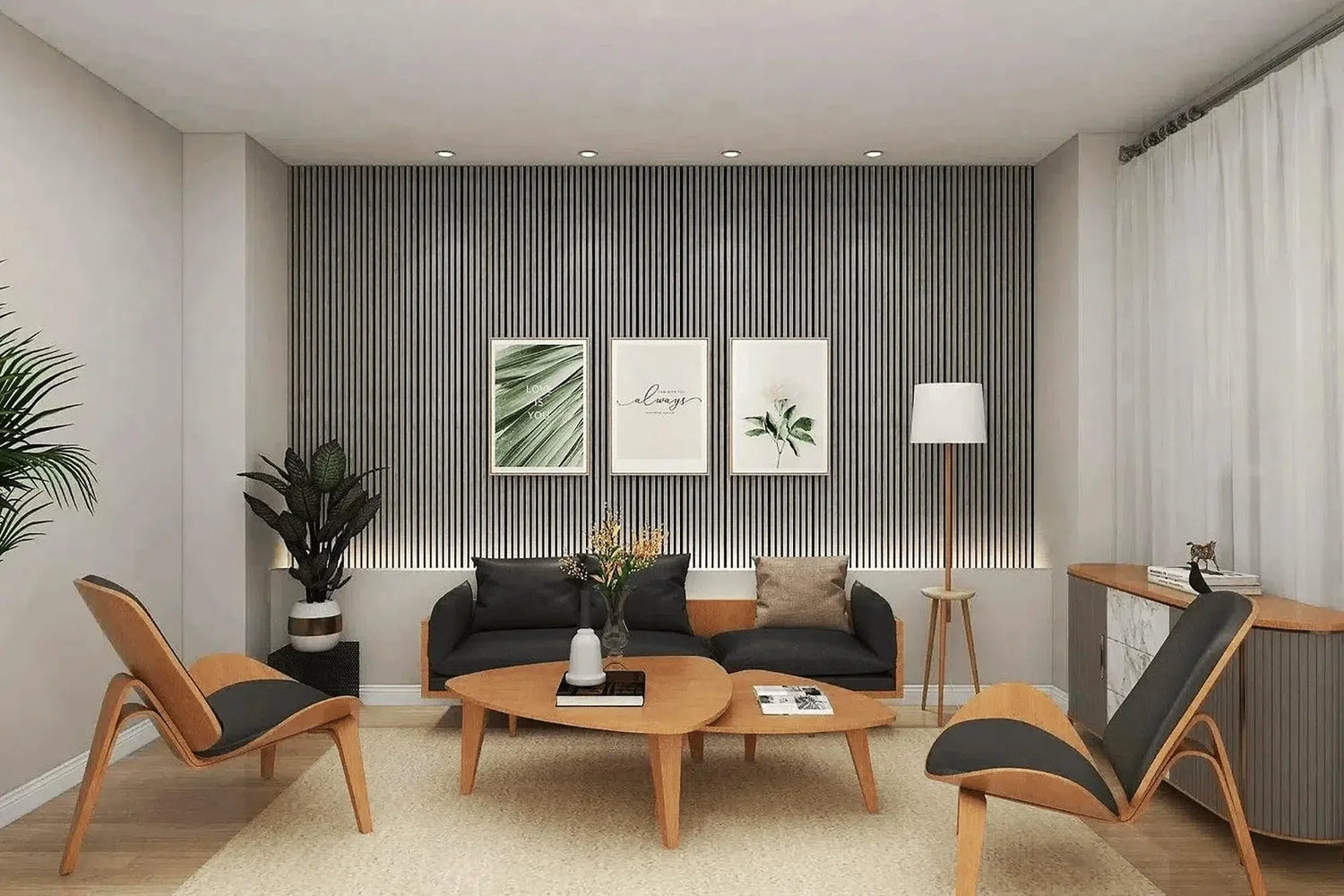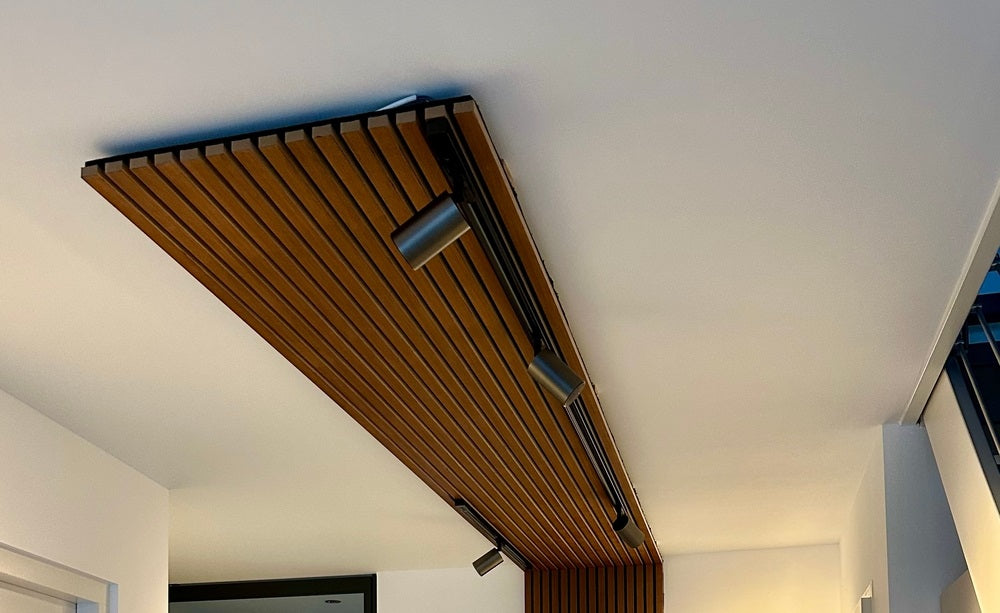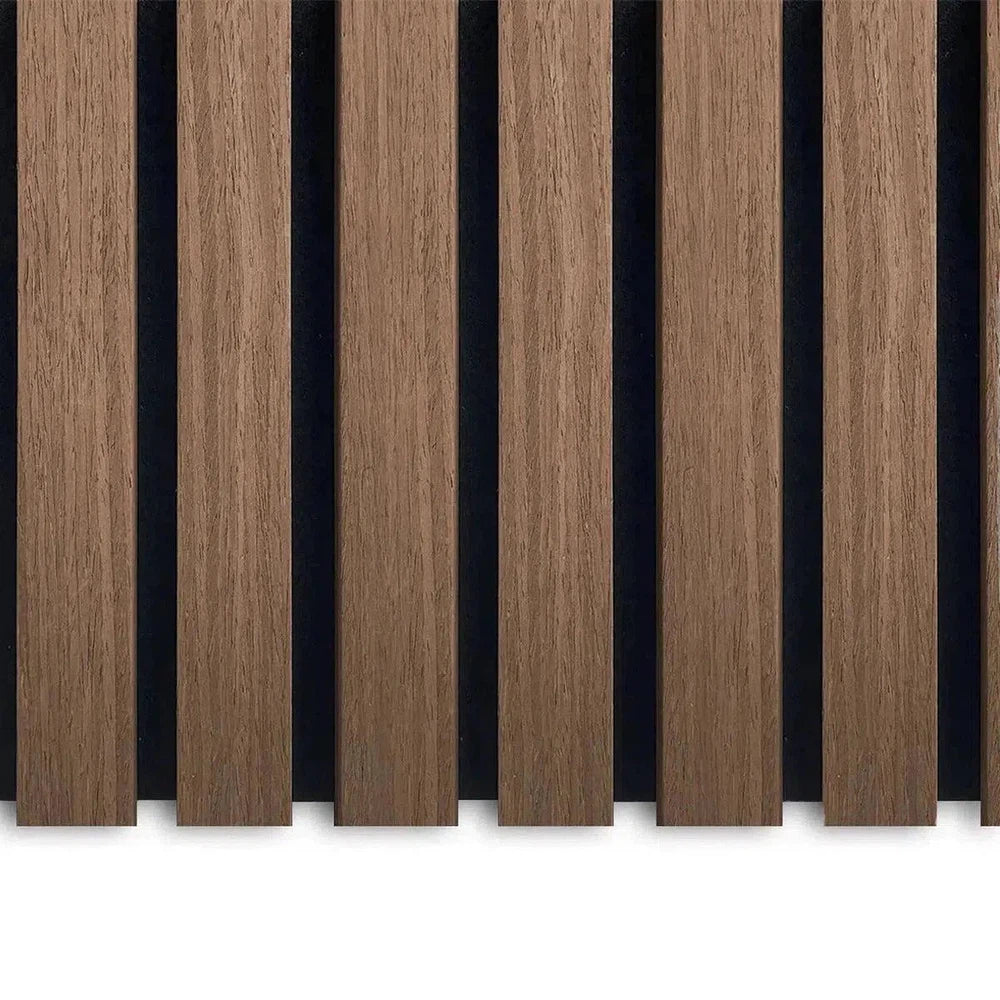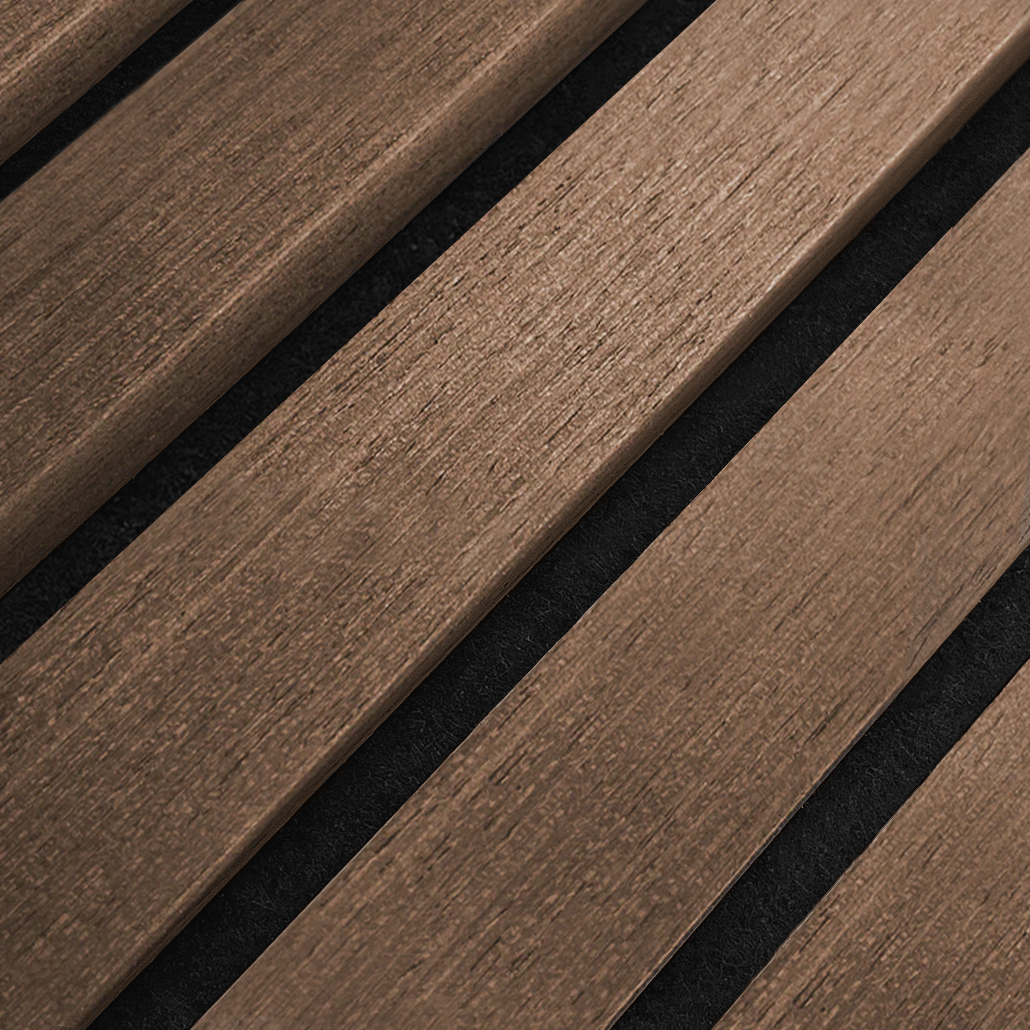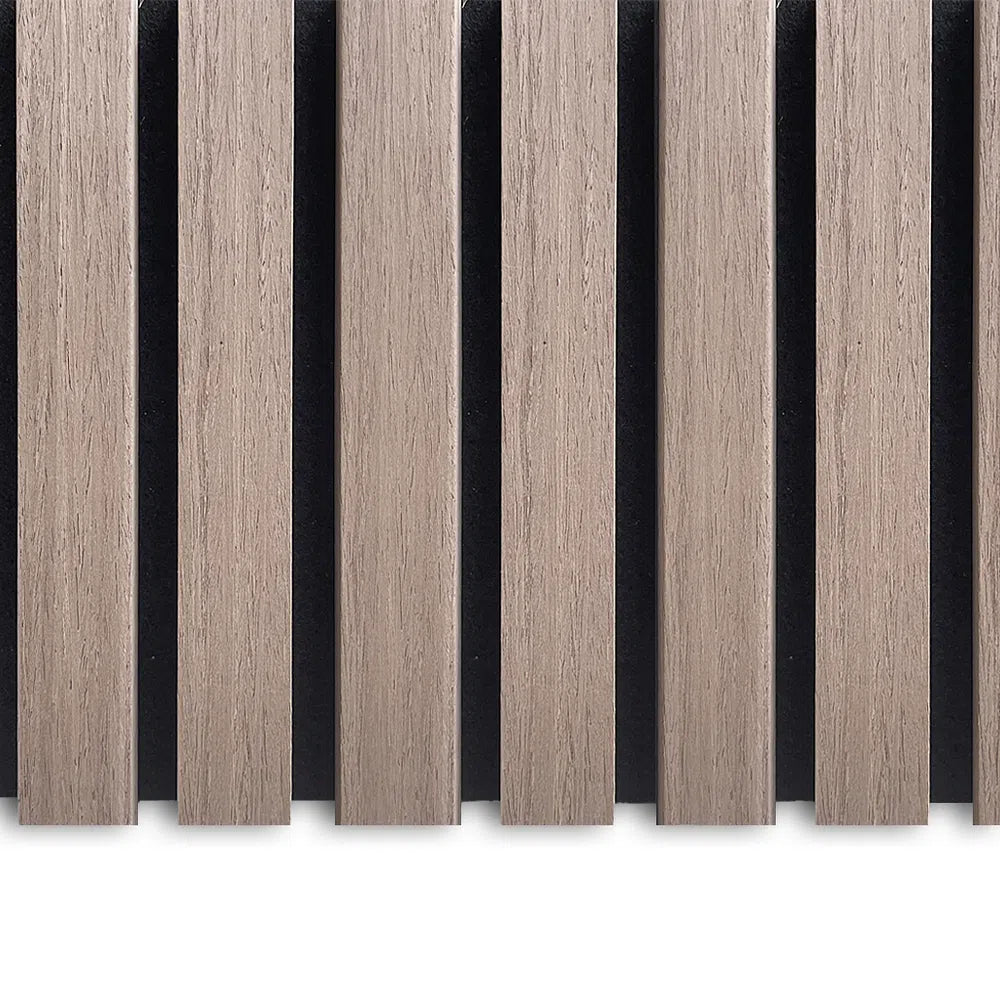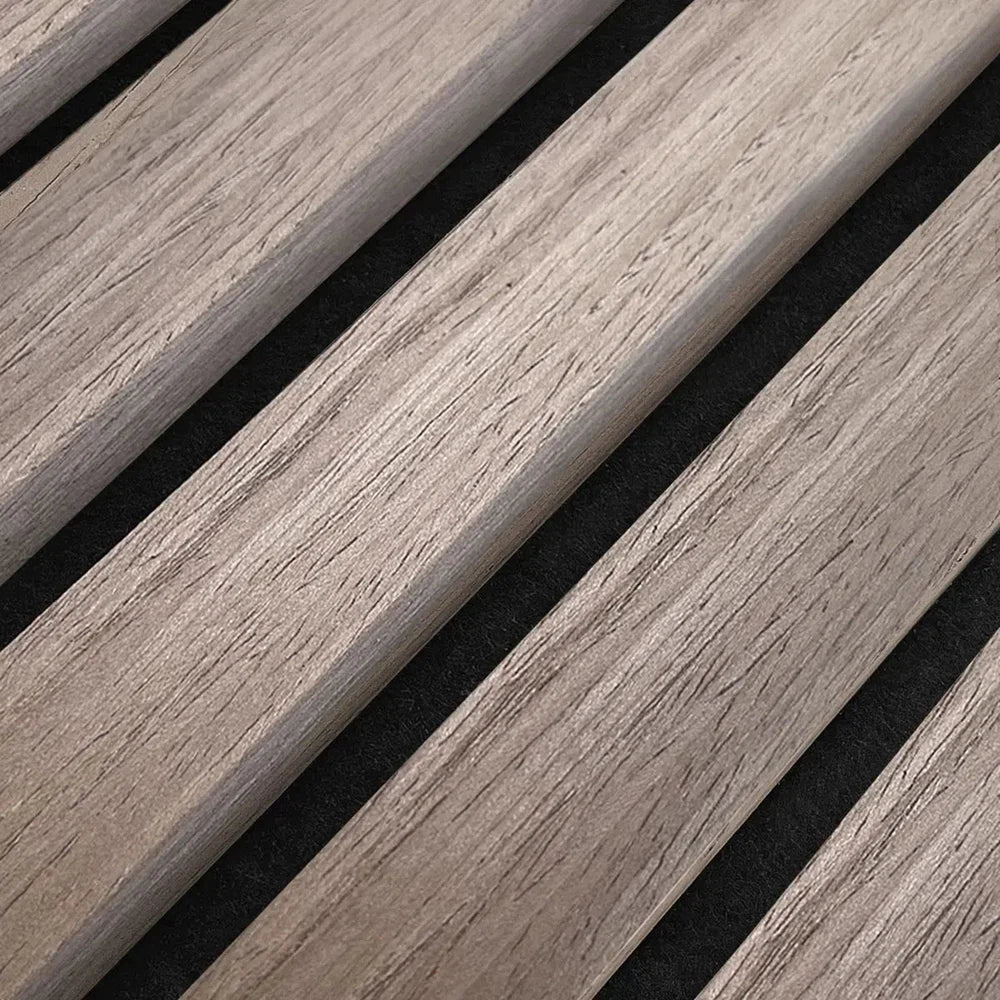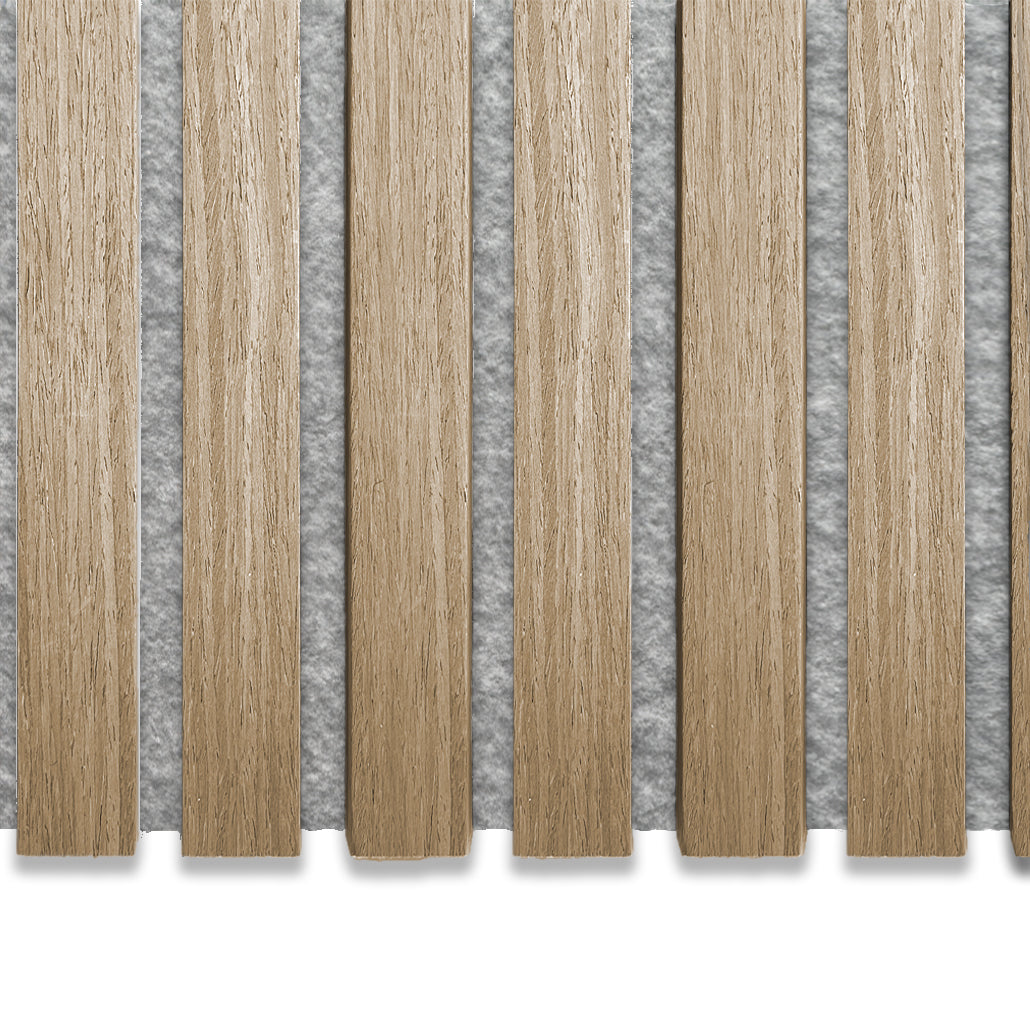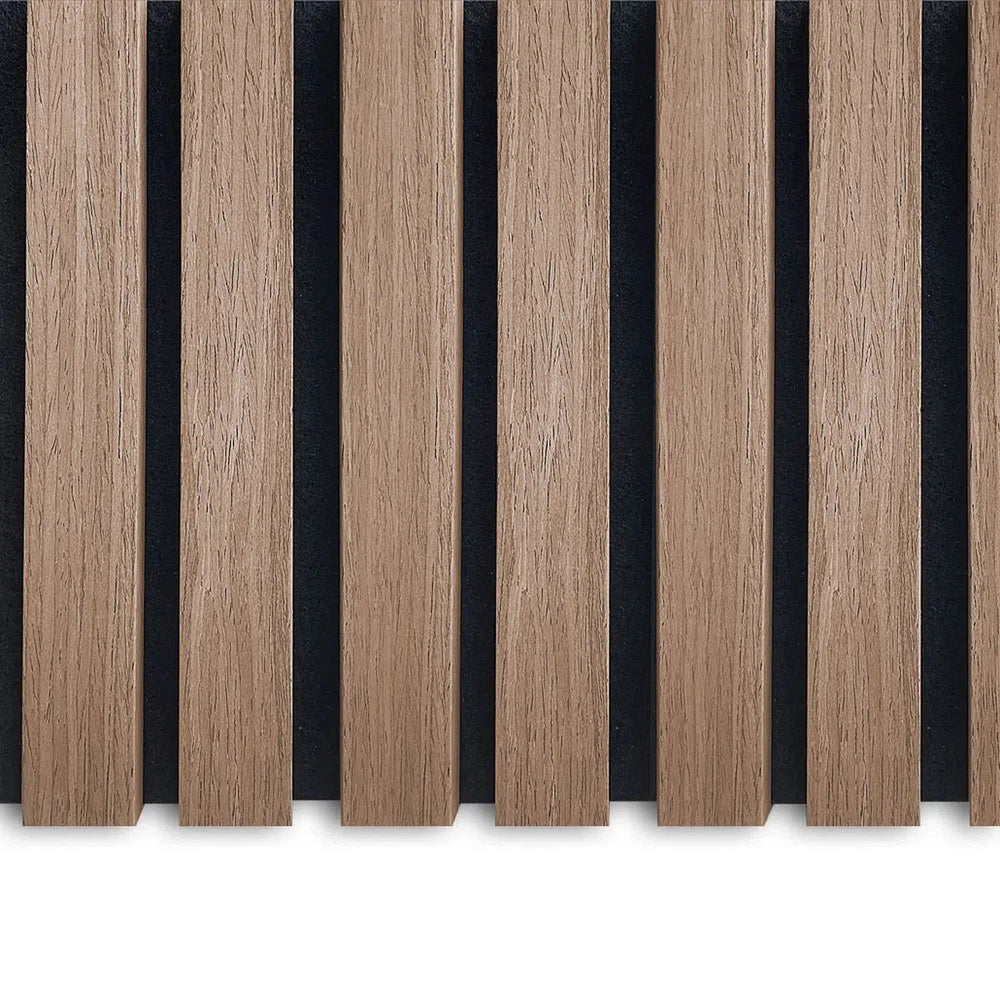The world of acoustic wall panels
Interior design is the art of creating spaces that are not only functional but also evoke the right atmosphere. To achieve a specific mood or ambiance, choosing the right interior style is crucial. Acoustic panels boast a unique texture and visual appeal. These wooden wall panels are versatile and complement various interior styles, from rustic to industrial, and from minimalist to bohemian. Join us in exploring the world of acoustic panels and discover in this style guide how to seamlessly integrate them with your interior style.
What are acoustic wall panels?
Acoustic panels are wall panels crafted from solid and sustainably sourced wood, giving them a luxurious look. They vary in texture, pattern, and color. Thanks to a layer of recycled felt on the inside, these panels offer sound-absorbing and insulating properties, perfect for creating a warm and stylish interior. AkuWoodpanel's wall panels are the only ones with 3-sided wood veneer.
Different styles and acoustic panels
Minimalistic
Minimalism revolves around simplicity and space. Acoustic panels in light or neutral colors with a smooth finish are ideal as a calming backdrop in a minimalist interior. Consider limiting their use to just a few panels to avoid excess.

Industrial
Want to add a touch of character to your industrial style? Try incorporating rough, unfinished, and dark acoustic panels. Use them as an accent wall and juxtapose them with metal elements. Consider adding some vintage pieces or opt for industrial lighting.

Bohemian
A bohemian interior is all the rage. To accentuate this eclectic and free-spirited style, opt for acoustic panels with colorful finishes or artistic patterns. You can use them as decorative elements or as exotic room dividers.
Scandinavian
To integrate acoustic panels into your Scandinavian interior, opt for panels with a natural wood grain. Choose light shades and strategically mount the wall panels. For instance, place them on accent walls or as space dividers. This emphasizes the clean lines, warmth, and organic materials characteristic of Scandinavian design.
Beach house
Acoustic panels bring the relaxed atmosphere of a beach house to life. Opt for light panels with a rustic finish and use them on walls or ceilings. This creates a natural and relaxed atmosphere. The panels enhance the beach's natural elements, allowing you to unwind both indoors and outdoors.

Rustic or country
Looking to integrate acoustic panels into your rustic interior? Panels with a warm, wood-like finish are a perfect match. Place them on walls, ceilings, or even furniture to amplify the rustic style. The wall panels create the warm and inviting atmosphere that defines rustic interiors.

Shabby chic
Opting for a shabby chic interior? Acoustic panels with a vintage look can enhance this style. Choose panels with an aged and bronze finish and place them on your walls, doors, or even furniture. The wall panels add a touch of nostalgic charm to the space, fitting perfectly with the romantic aesthetic of shabby chic.
Hollywood regency
To elevate your Hollywood regency interior, opt for acoustic panels in an elegant color like gold, silver, or black. For instance, use the luxurious, glossy panels as decorative cabinet doors. Alternatively, pair the acoustic panels with mirrors and striking accessories. The panels create an extravagant atmosphere, adding a touch of glamour to your Hollywood regency style.


Japandi
A Japandi interior combines the minimalist beauty of Scandinavian design with the serene, zen-like elements of Japanese style. Acoustic panels can be a harmonious addition here. Opt for sleek, natural wooden wall panels to use on walls or as room dividers. Use wooden panels in light shades to enhance the serene aesthetic. To complete the look, combine the wall panels with minimalist and functional furniture and natural decorations.

Art deco
To integrate acoustic panels into an art deco interior, choose panels with a bold, geometric pattern and a glossy finish. The wall panels accentuate the pronounced style of art deco while adding a touch of glamour. Combine the panels with elegant furniture and decorative accessories to further enhance the art deco atmosphere.
Southwestern
Opting for a southwestern or desert-inspired interior? Acoustic panels with earthy colors and rough textures can be a great addition. Use panels with warm and natural tones to enhance and highlight the earthy and rustic characteristics of the southwestern style. Add some authentic southwestern decorations, such as rugs and ceramics, to complete the picture.
Transitional
A transitional interior combines traditional and modern elements. Acoustic panels can bridge the gap between these different elements. The panels strike a perfect balance between classic and contemporary and can be paired with both traditional and modern furniture. By using acoustic panels with a versatile finish, you'll achieve a well-balanced interior.

Eclectic
In an eclectic interior, acoustic panels can serve as an artistic canvas. The style is a fine blend of various styles, eras, textures, and colors. Therefore, choose panels with diverse finishes and textures to create striking elements. This creates coherence in an interior that is diverse and unique.
Colonial revival
In a colonial revival interior, panels with a classic wooden look can truly add something special. The panels embrace the elegance and history of the style, emphasizing the colonial atmosphere. The panels can easily be combined with antique furniture pieces and accessories to create a timeless atmosphere.

How to combine acoustic panels with your personal style
When selecting the right texture and color of wall panels that suit your style, it's essential to consider the colors and textures prevalent in your interior. If you're aiming for a timeless look, then neutral shades like white, beige, and gray tones are often a logical choice.

Additionally, finding the right contrast and perfect balance is crucial when integrating acoustic panels into your interior. Consider mounting the panels on one eye-catching wall while keeping the rest of the walls neutral. This creates visual equilibrium. Above all, don't hesitate to experiment and be unafraid to play with different elements.
